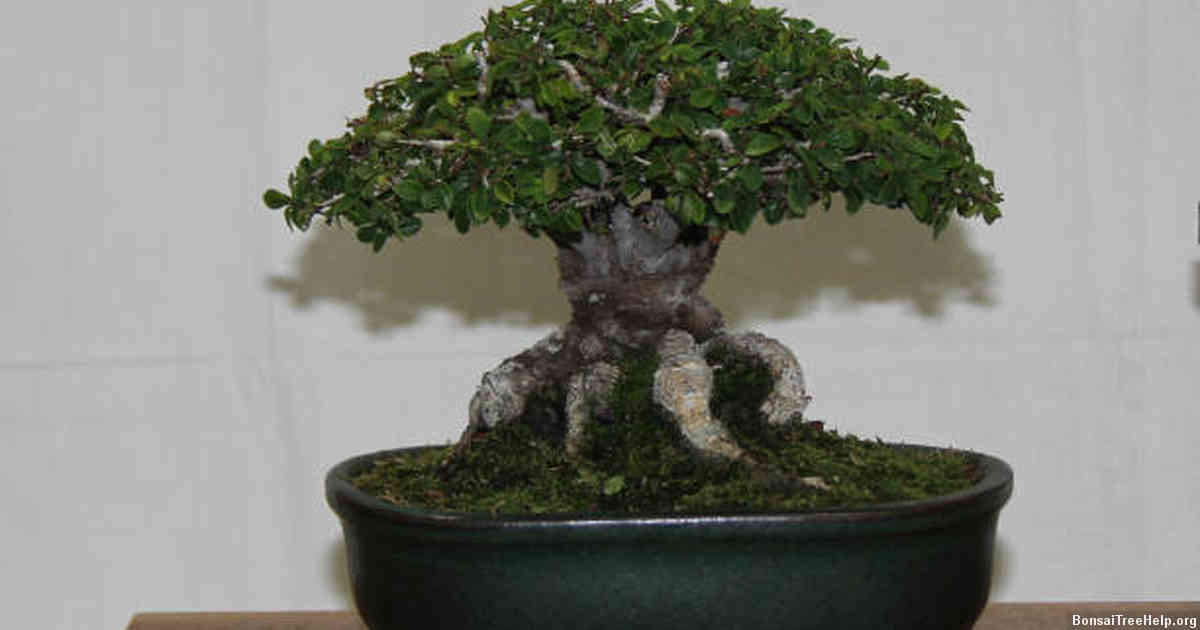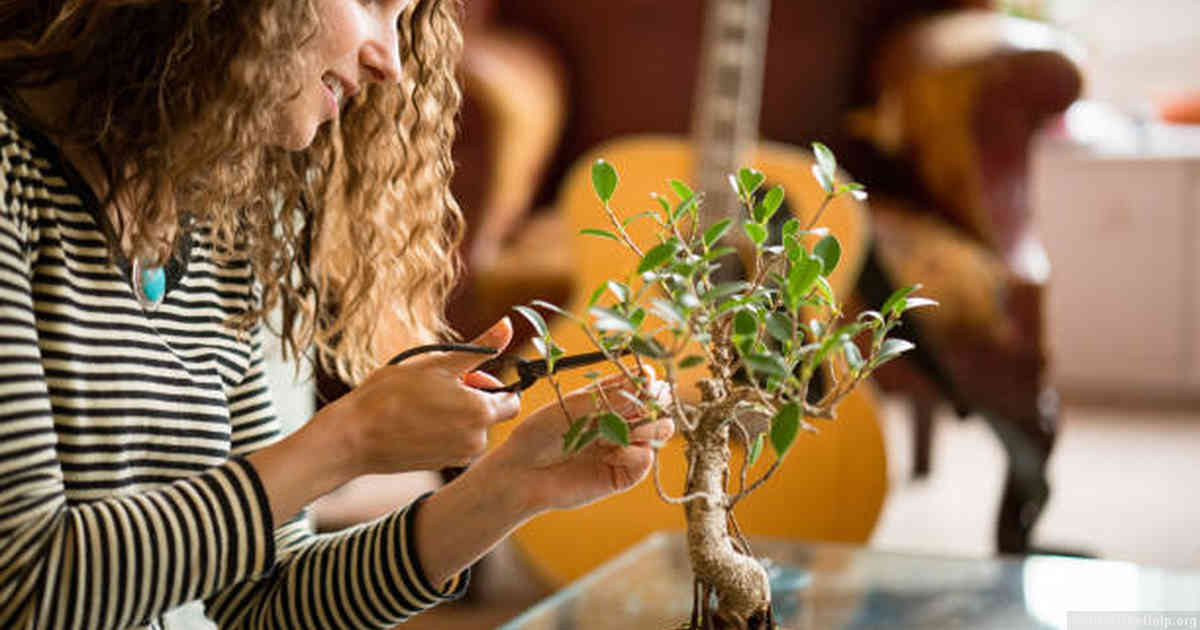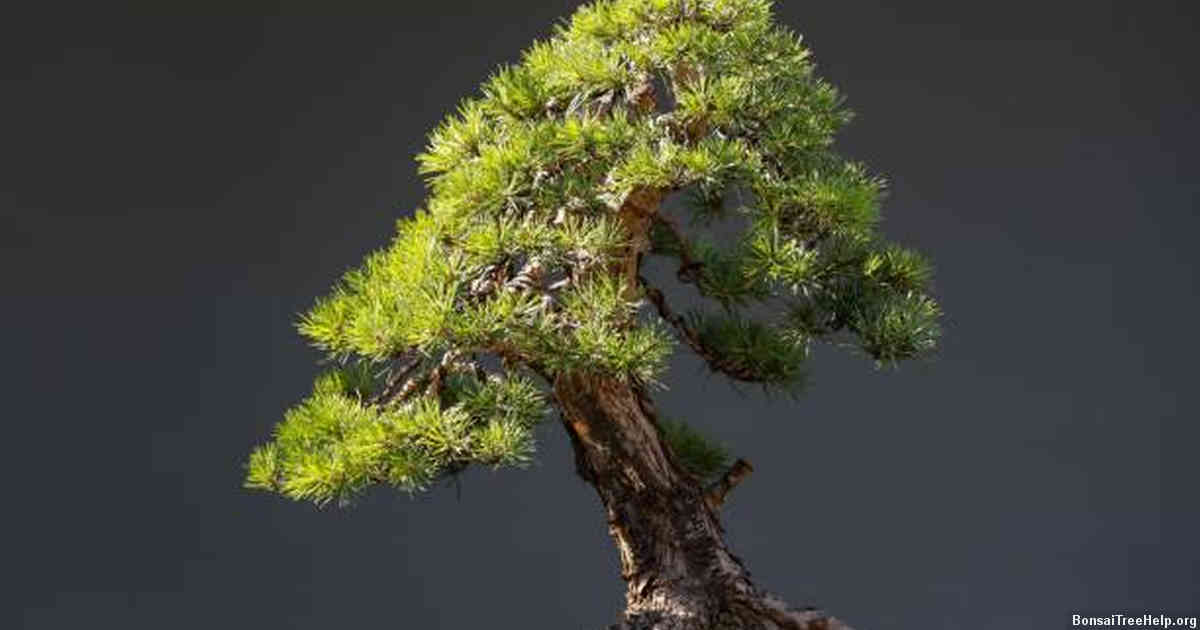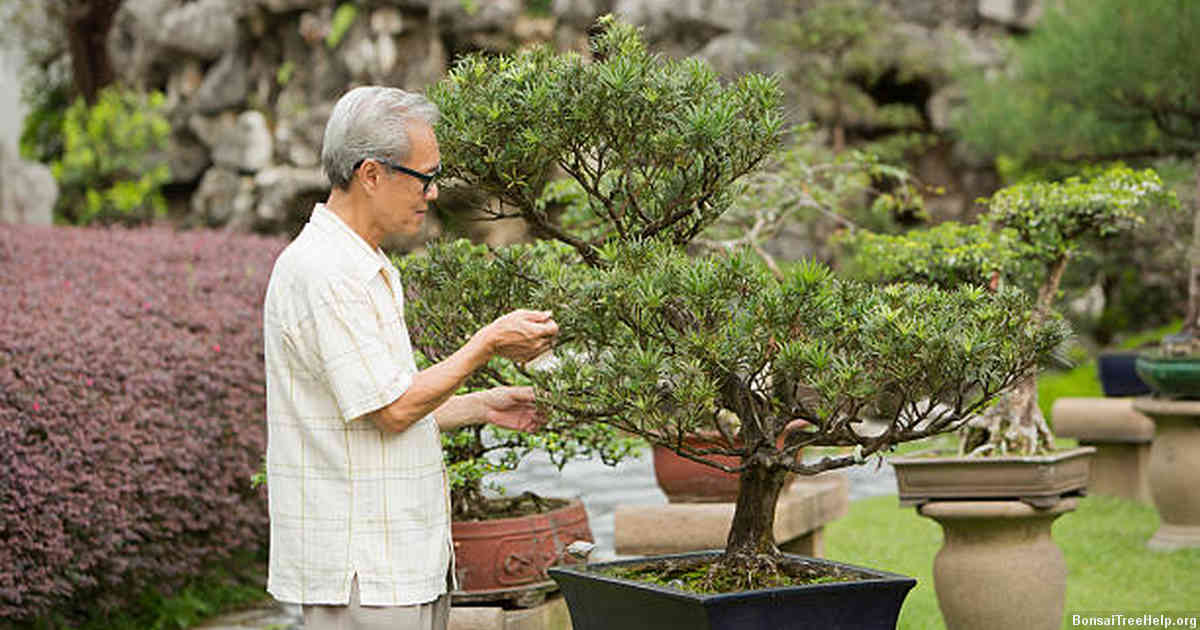
1. Water your bonsai tree thoroughly whenever the soil begins to dry out. Once weekly should usually suffice, but you may need to water more often in hotter months. Use room temperature water and try not to over or under-water your tree.
2. Feed your bonsai regularly with a balanced fertilizer such as one with an N-P-K ratio of 10-10-10 at half strength once a month during the growing season (spring through fall). Stop fertilizing when the plant’s leaves start to drop off in autumn, and do not fertilize during wintertime.
3. Prune back branches that have grown too long by snipping them with sharp scissors, especially on young trees where pruning helps shape it properly and establishes strong branching patterns. Do this in early spring every year for deciduous trees and late summer for evergreen varieties.
Contents:
Choosing the Right Bonsai Tree Species

Choosing the ideal bonsai tree species for your home or garden can be a daunting task. It is important to remember that there are many varieties of bonsai trees, each with its own distinct look, form and requirements for care. To simplify the process of selecting the perfect bonsai tree species, it helps to understand a few key points. Consider the climate where your bonsai tree will live. Different bonsais thrive in different climates so ensure you pick one suited to yours; if you’re living in colder climates junipers tend to work best, whereas warmer climates may call for something like ficus. Some varieties such as Japanese maples require extra care when temperatures dip below freezing – make sure to keep an eye out on these types.
Take into account how much time and effort you can dedicate towards caring for your bonsai tree – some have demanding needs while others don’t need as much upkeep. For example cherry blossom trees produce beautiful pink blossoms in springtime but demand a great deal of attention through pruning back new buds and regularly trimming branches. If you prefer something lower-maintenance then pine trees may be more suitable since they require minimal pruning and are able to withstand drought conditions better than other varieties.
Think about which type of pot works best with your chosen plant species – round pots might bring out curves whereas square/rectangular ones suit trees with straight trunks best. Matching foliage color with pot material is also an option – green leaves against lighter shades works especially well and adds definition without taking away from nature’s beauty. Remember that while aesthetics are important choosing materials which allow adequate drainage is paramount too.
Soil and Potting Mixes for Bonsai Trees

Optimal soil and potting mixes are essential for a successful bonsai tree. With its shallow roots, it is important to use quality ingredients in the potting mix that will nourish the tree while providing good drainage and adequate aeration. For starter pots or cuttings, most experts recommend using a basic soil-based compost such as cactus mix or succulent mix. This type of soil contains enough organic material that it drains well, but still provides plenty of nutrients to help get your seedling off to a strong start.
For ongoing maintenance care, bonsai enthusiasts prefer specialized soils formulated specifically for this task. Many create their own blend by mixing together different products like akadama (a Japanese clay), pumice stone, peat moss and humus; adding sand or perlite can also help with drainage and aeration issues. These types of soils should be mixed into existing root systems so they don’t interfere with the fragile trees nutrition levels–something that could happen if too much compost was added at one time instead of gradually over several months.
Because bonsai rely on shallow roots for their water supply versus deep taproots used by many plants to search for hydration further down in the ground, proper watering schedules must be followed throughout the year based on your climate zone and seasonal rainfall patterns. Too little moisture will stunt growth whereas overwatering could cause rot which could lead to death of your treasured plant investment–be sure to check regularly for signs like yellowing leaves or wilted limbs as these are common signs you need more precise watering habits.
Watering Techniques for Bonsai Trees

Watering is one of the most important parts of growing and maintaining bonsai trees. Without proper care, a healthy tree can quickly become stressed or even die. To ensure that your bonsai stays healthy and vibrant, it is essential to understand the watering techniques necessary for successful cultivation.
Deep watering is best way to properly water bonsai trees in order to penetrate root systems deeply. It requires allowing enough time for the soil to absorb water until moisture reaches the lower levels of soil then leaving it until dry again before repeating. The frequency of deep watering may vary depending on pot size, type of soil used and environmental conditions such as sunlight and temperature; however, it should typically occur at least once every 10 days during summer months while reducing frequency in winter when temperatures are lower and plants are dormant.
Another technique commonly used with bonsai trees is misting which provides light hydration throughout the day by atomizing water into fine droplets onto foliage without saturating roots directly. This method should be done early in morning or late evening ensuring that leaves don’t stay wet for too long so as not to promote fungal growth from excessive moisture retention from direct sun exposure during midday hours which could burn tender foliage instead. Mistings also increase air humidity around plant helping to keep environment more suitable for its growth even during dry weather periods when adequate amounts of rainfall may not be available making them an indispensable tool in any enthusiast’s arsenal if their region experiences prolonged arid spells.
Fertilizer Use for Optimal Growth

When caring for a bonsai tree, fertilizer is essential in aiding the growth process. Fertilizers contain all of the necessary nutrients required to help your bonsai bloom and remain healthy. Depending on the type of bonsai tree you own, they may require different types of fertilizers or specific amounts. It is important to carefully select the right amount of fertilizer that your bonsai needs.
Using too much or too little fertilizer can lead to burned roots or nutrient deficiencies which will reduce the overall health of your plant and hinder its progress. One method for determining how much fertilizer you should use is by assessing the age and size of your particular species before applying it as an addition to your soil mixture. If you have younger saplings, they may require more frequent applications whereas mature plants may only need replenishing every 6-8 weeks during their growing season.
Organic fertilizers are also highly beneficial when added into your soil mix as well. Natural ingredients such as fish emulsion, worm castings, compost tea, and seaweed extracts are excellent sources for providing vitamins and minerals to enhance growth rate while maintaining your desired level of foliage quality. Be sure to read through each product’s instructions prior to application so you know what dosages are best suited for proper nourishment throughout multiple seasons.
Pruning and Shaping Your Bonsai Tree

Properly pruning and shaping your bonsai tree is an essential step towards achieving its desired look. Pruning helps keep the plant healthy by removing dead branches or shoots as well as controlling its size. When it comes to shaping a bonsai, careful planning must take place in order to achieve a balanced look that enhances its beauty. To properly shape your bonsai, you will need several tools including bonsai shears, concave cutters, wire cutters and tweezers.
For starters, you should remove any dead or damaged branches of the tree which can be easily done with the help of shears. Use concave cutters on larger branches when reducing their length while also creating shallow wounds that allow for better healing and less dieback. This is especially useful when trying to train your bonsai into a certain style such as broom or root over rock. Wire cutters can come in handy when wiring thicker branches to form curves or twists and tweezers are used for finer details on smaller shoots.
Patience and practice are key here since mastering the art of pruning and shaping your bonsai could take some time but it’s definitely worth putting in all the effort if you’re looking for impressive results down the line.
Repotting Your Bonsai Tree

Repotting your bonsai tree is one of the most important steps to properly growing it. When done correctly, it can help support your tree’s health and ensure that its soil remains well-drained and nutrient-rich. In order to repot your bonsai tree correctly, you need to select a container with adequate drainage holes, use the right potting mix, and make sure not to over water or under water it.
Choosing a suitable container for your bonsai tree is a vital step in the repotting process; you want it big enough so the roots have room to expand but small enough so they don’t have too much space as this can result in root rot and other problems. A ceramic or plastic pot works best and is typically chosen over terracotta pots since they retain more moisture. Your pot must have drainage holes at the bottom; if there are none, create some with a drill before repotting begins.
The final element of repotting your bonsai tree is selecting an appropriate soil mixture; an organic potting mix that has been specifically designed for bonsai trees tends to work best. Once you’ve selected a suitable mix of soil then you can begin planting by carefully filling in around the base of the plant until all its roots are covered – making sure not to pack down too tightly – before replacing any removed rocks or wire baskets on top for added stability and visual appeal. When finished give your newly potted bonsai tree a light watering and set it in an area where it will receive plenty of sunlight throughout the day – happy gardening.
Common Pests and Diseases That Affect Bonsai Trees

Like any other type of garden, bonsai trees are susceptible to pests and diseases. To prevent damage, it is important to understand common insects that can harm your tree as well as disease-causing organisms.
Aphids are a small insect, usually green or yellow in color with soft bodies. Aphids feed on plant sap which can leave behind a sticky residue called honeydew. This material will encourage the growth of sooty mold, a dark fungus that leaves black spots on plants. To prevent infestations, check leaves regularly for signs of aphids and then use an insecticide spray targeted towards them to control their population.
Spider mites are another pest that affects bonsai trees by draining sap from their needles or leaves. These arachnid relatives spin webs between branches which can be unsightly when present in large numbers. For prevention, water foliage with a fine mist every few days to keep spider mites away and make sure not to overwater the soil or roots as this provides favorable conditions for these pests.
Fungal diseases such as root rot and powdery mildew can also affect bonsai trees if environmental conditions become overly damp or humid during growth seasons. Regular pruning of deadwood is recommended as removing affected tissue prevents spores from spreading throughout the tree’s canopy while promoting proper airflow within its structure. If disease persists after taking preventive measures like these then fungicides may be needed to stop the development of more serious infections on your beloved specimen.
Leave a Reply